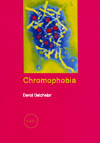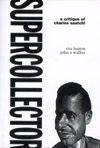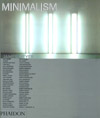|
|
|
Shirin Neshat
This catalogue was published to coincide with the Iranian artist Shirin Neshat’s solo show first held at the Kunsthalle in Vienna, and later at the Serpentine Gallery in London, and at the Hamburger Kunsthalle in Hamburg. The book offers a vast selection of the artist’s photographic work in high quality black and white reproductions. These include the photographic series “Women of Allah,” created between 1993 and 1997; stills from the videos Turbulent (1998), Rapture (1999)—which was awarded a prize at the 48th Venice Biennale—, and the more recent Fervor (2000). The images are accompanied by an interview with the artist by Gerald Matt and critical essays by Ruth Noack and Hamid Naficy. The texts are in both English and German.
Shirin Neshat, Kunsthalle Wien (Museumsplatz, 1, Vienna,
www.kunsthallewien.at), Serpentine Gallery (Kensington Gardens, London,
www.serpentinegallery.org.uk), 2000, 94 pages, 20 x 24 cm.
|

|
Audience
This book forms the catalogue of photographic works from the “Audience” series by Marco Calò, who was born in Lecce in 1971. The television related theme is treated in a rather revolutionary way in comparison to the normal forms of analysis it is put to and consideration it is given. This young artist points his lens at the expressions of ordinary people, ensconced in their normal home environments, sitting in front of the television, absorbed by its programs. The series offers the reader an unusual “double take” on the subjects: one from the camera of Calò, the other from the TV screen. Or, rather, these are expressions that both observe and are, at the same time, being observed. A text by Vanessa Roghi accompanies the photos.
Marco Calò, Audience, Cal.co Editore (Via G. Donizzetti, 15, Florence,
www.calcoeditore.com, e-mail info@calcoeditore.com, 2000, 110 pages, 21 x 28 cm.
|

|
David Batchelor, Chromophobia
This is a highly readable book, which adopts the phenomenon that the author defines as “chromophobia” as its main theme. “Chromophobia” can be defined as a sort of fear of corruption or contamination brought about by the use of color, which has penetrated the cultural and intellectual thinking of the West. Already present in the world of the ancient Greeks, in his book David Batchelor considers this terror of color in the context of modern and contemporary society. Numerous different theories exist regarding color in philosophy, science, and in art. In this treaty, Batchelor talks about color in cinema, architecture, and advertising, to demonstrate the interdisciplinary nature of contemplations about color.
David Batchelor, Chromophobia, Reaktion Books Ltd (79 Farringdon Road, London,
www.reaktionbooks.co.uk), 2000, 192 pages, 15 x 21 cm.
|

|
Supercollector. A critique of Charles Saatchi
Written by Rita Hatton, art historian, and John A Walker, lecturer in art and design at Middlesex University, this text furnishes a detailed analysis of one of the principle characters to have emerge from the world of advertising and art collecting in recent years, Englishman Charles Saatchi, who opened his first gallery in London in 1985. Rather like a modern-day version of the renaissance Medici family, Saatchi have exercised enormous power within the international contemporary art market. The text forms a true biography of his life and “empire” in the field of advertising strategy and his choices in the world of contemporary art collection.
Rita Hatton, John A Walker, Supercollector. A critique of Charles Saatchi, (2 Rufus Street, London,
www.ellipsis.com), 2000, p. 288, 10,5 x 15 cm.
|

|
Minimalism
This rich catalogue is bound with an opaque, hard-back cover distinguished by the cold gray-green of its hues. The book provides a comprehensive account of the work of the leading names in American Minimalism during the ’60s, such as Carl Andre, Dan Flavin, Donald Judd, Sol LeWitt, and Robert Morris. The author, James Meyer—lecturer in Art History at the Emory University Atlanta—is the most important historical and critical authority on American Minimalism. In the essay written for this catalogue, Meyer describes the development of the artistic movement, setting it in the correct historical, and more general, cultural context. The section “Works” documents the most important artworks of the ’60s and examples of contemporary pieces that show the influence of Minimalism. In “The Documents,” which brings the catalogue to a close, Meyer amasses a selection of critical and historical essays—some of which have never been published before and are now almost impossible to come by—, statements by artists on the driving principles behind their work, and reviews and comments on the exhibitions of the years in question.
James Meyer, Minimalism, Phaidon Press (Regent’s Wharf, All Saints Street, London), 2000, 304 pages, 25,5 x 30 cm.
|

|
|
|
|